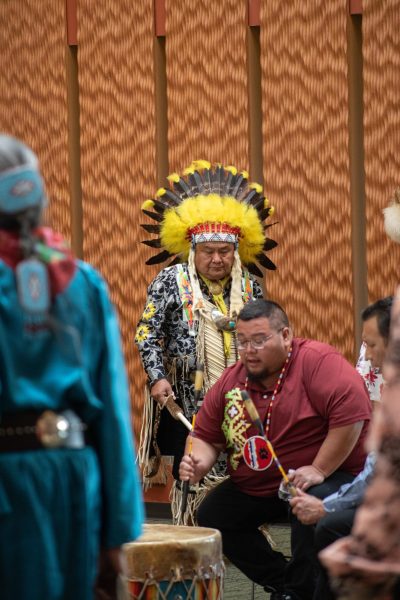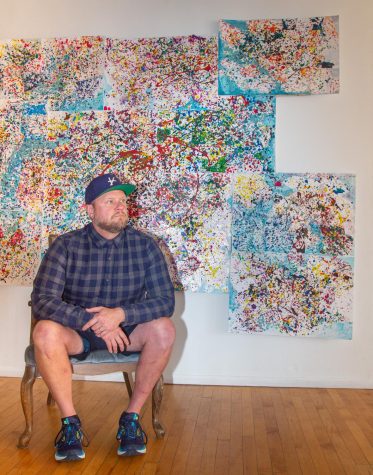The long line that is domestic violence
On average, nearly 20 people per minute are physically abused by an intimate partner in the United States, per the National Coalition Against Domestic Violence.
A classmate, a friend, a sibling, a professor; any and all of these people are exposed to the possibility of being involved in or experiencing domestic violence. What exactly does that mean?
According to NCADV, “Domestic violence is the willful intimidation, physical assault, battery, sexual assault, and/or other abusive behavior as part of a systematic pattern of power and control perpetrated by one intimate partner against another. It includes physical violence, sexual violence, psychological violence, and emotional abuse.”
Among the unfortunate frequency of victims that the NCADV has displayed, Elgin Community College took its part in a stand against domestic violence on Feb. 14, during the The Long Red Line event held in the Jobe Lounge between 11 a.m. and 2 p.m.
Students, faculty and staff adorned red articles of clothing, tied red ribbons around wrist or pony tails or sported the color in any fashion to stand with the global movement against rape and violence.
“I think [the act of abusing women] is the most cowardly thing a man can do. It’s a reflection of his own masculine insecurities,” said ECC alumni Gabrielle Welch, 26, who once experienced psychological abuse in a prior unhealthy relationship. “He must’ve not felt masculine growing up, or something or someone made him feel out of control. So, he abuses a woman to feel in control and powerful because he was undermined his whole life.”
The NCADV confirms that a sign of abusive partners included “low self-esteem and feels powerless and ineffective in the world. He or she may appear successful, but internally, they feel inadequate.”
Warning signs of a domestic partner/relationship can sometimes be difficult to detect, especially when most abusive acts may happen in the privacy of one’s home. However, oblivion may overtake many merely due to the lack of abuse present among two partners in a more social setting.
Likewise, abuse may not always be recognized until one partner is no longer around the toxic environment that once felt so normal.
“I didn’t know it was happening until after I got out of that relationship and realized how he talked to me, how he made me feel and the words he would use,” Welch said. “He stood on a high pedestal and would lie to me for his benefit. He was only nice to me when it benefited him.”
Misconceptions lie within what qualifies behaviors to be considered abuse, and most believe abuse is strictly physical. The NCADV, and in the case of Welch and her previous partner, abuse can equally be verbal, causing emotional or psychosocial distress.
Harassment, accusations, humiliating comments, bad temper, jealously and possessiveness are among a few examples of abusive-type behavior and personality.
Colleen Rodabaugh, second year student at ECC, has experienced her own form of possessiveness, bad temper and demeaning language in a prior relationship.
“It’s not something you think much of while being in the relationship because it feels normal. You claim to love someone, so you just think of it as being that…love,” Rodabaugh said.
Welch agrees that women “deserve better than that and to not blame herself for the abuse she’s getting…it’s okay to feel trapped or not notice it because when you are in the situation, you can’t really tell until either you, yourself, or someone else help you take a step back from it.”
In any case of emergency or danger, contact 911. For confidential, anonymous help contact the National Domestic Violence Hotline at 1.800.799.SAFE.










